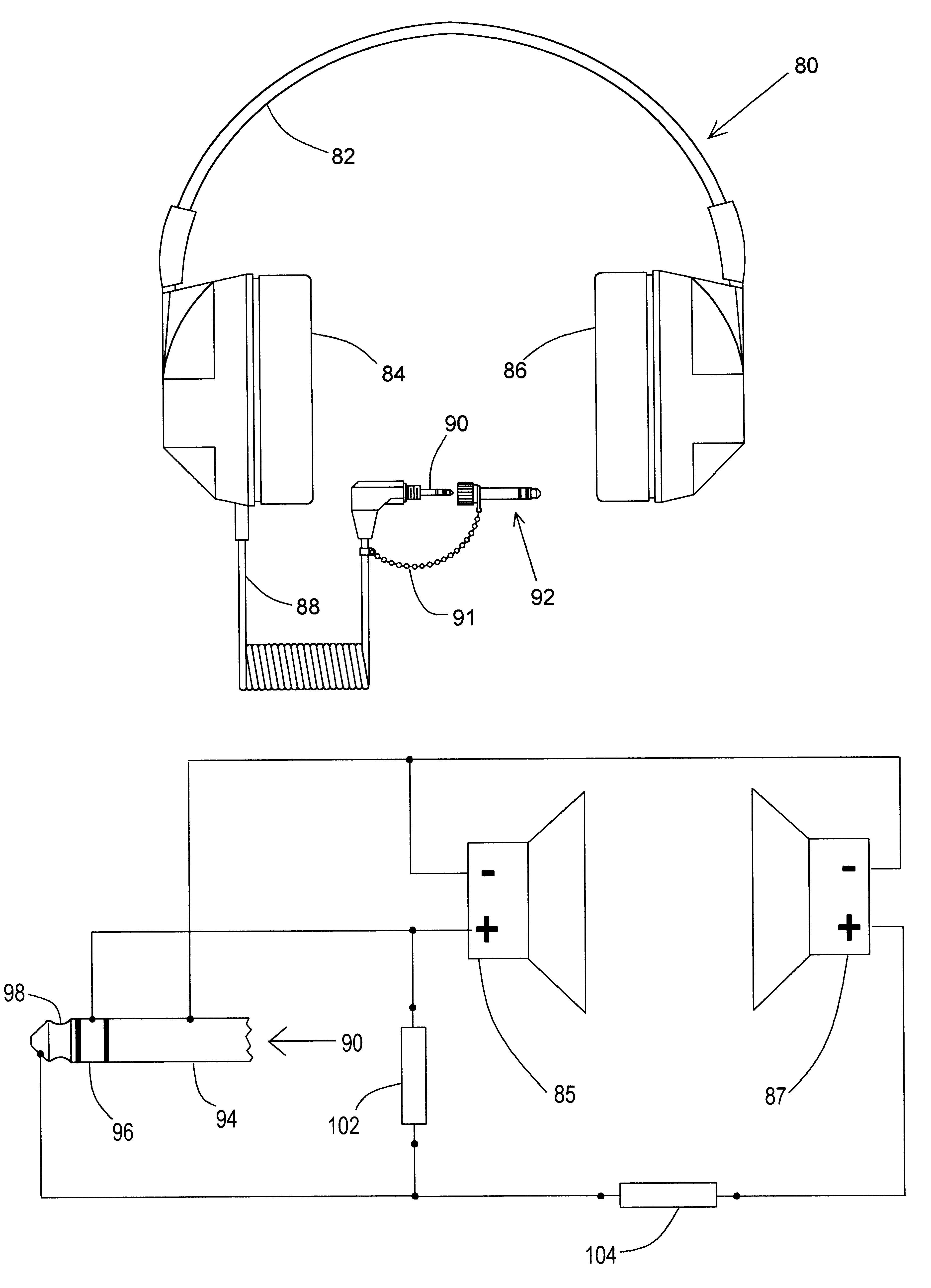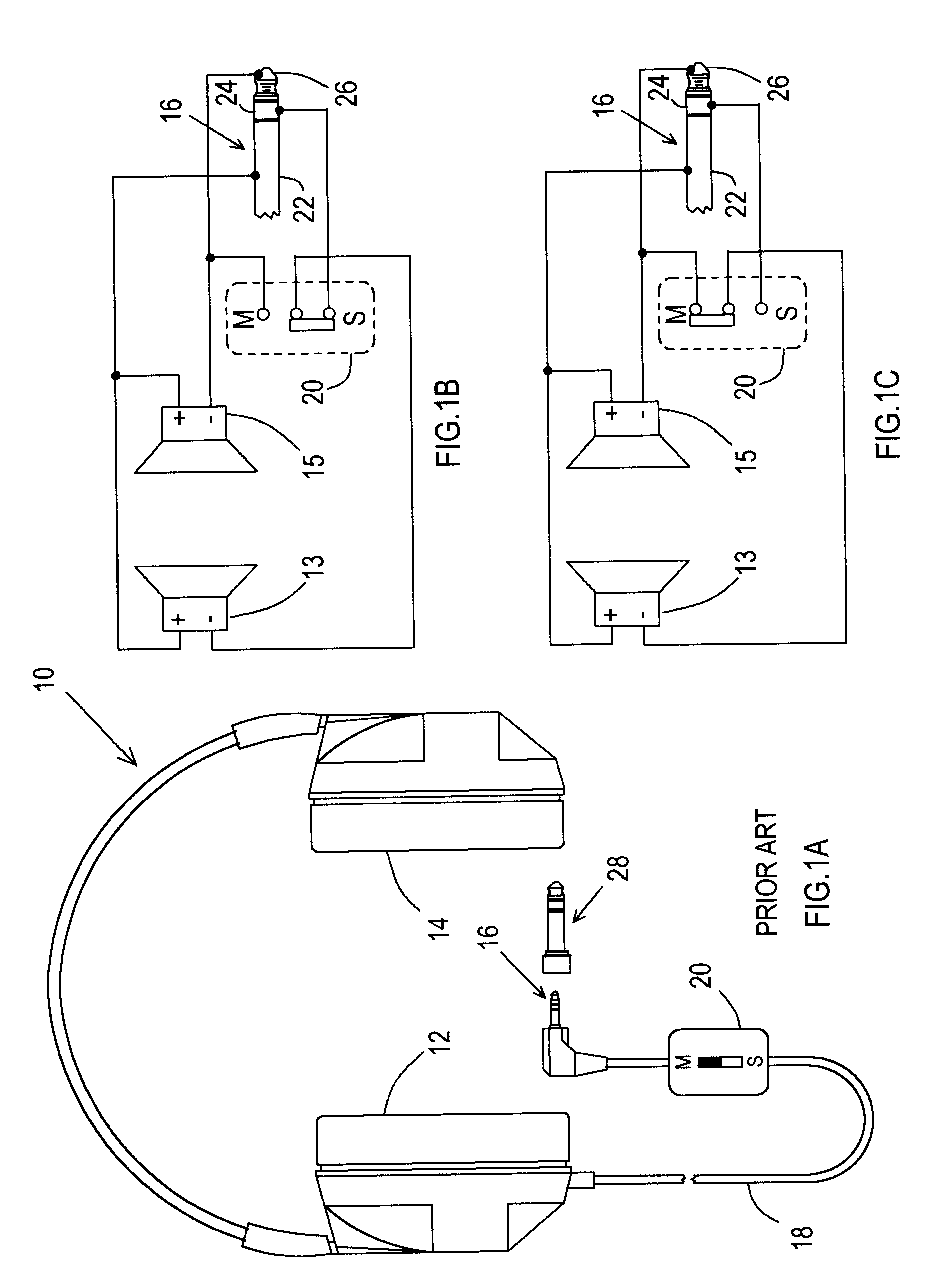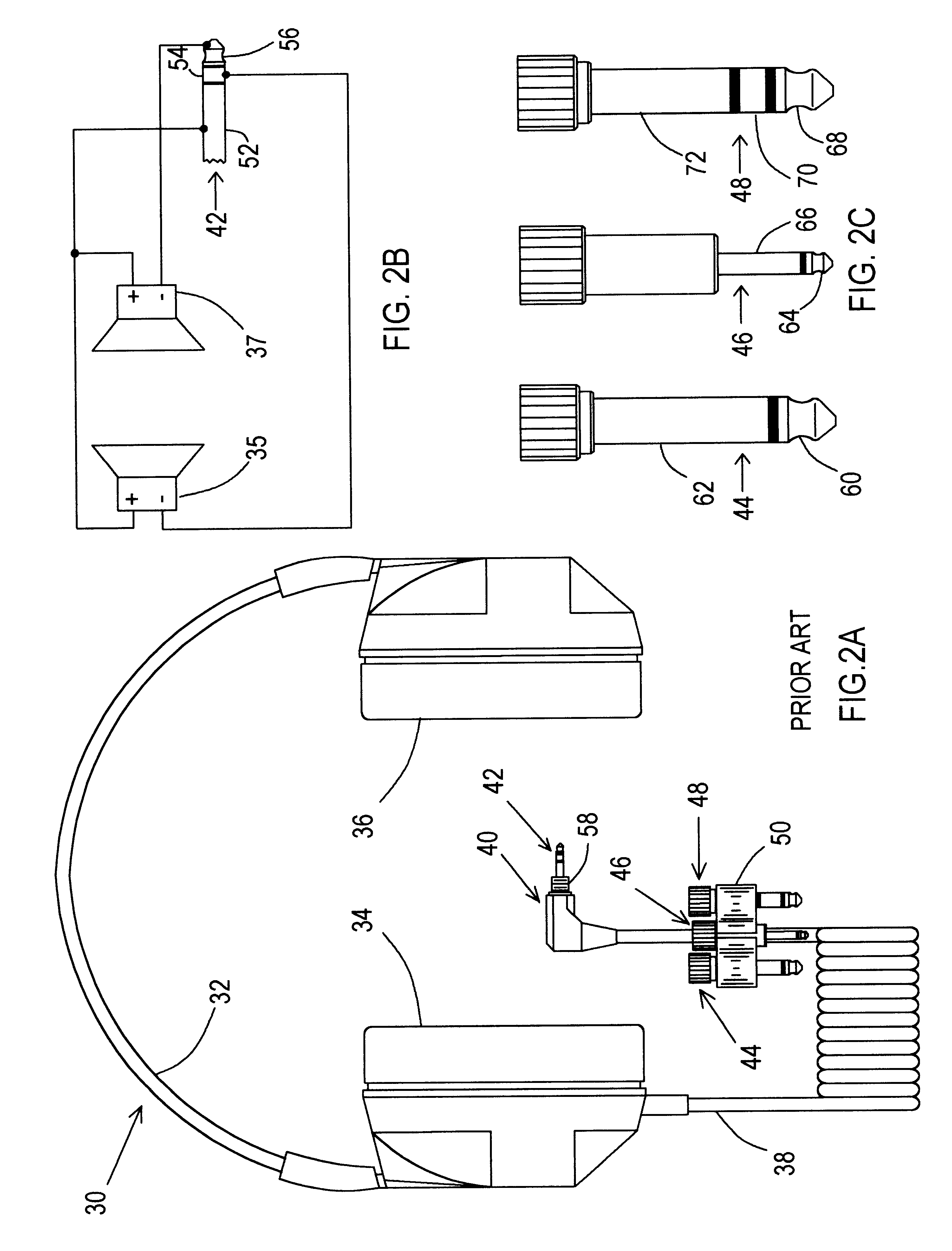Automatic stereo/monaural headphone
a headphone and stereo technology, applied in the direction of broadcasting system receiving, coupling device connection, broadcasting with distribution, etc., can solve the problems of not having the ruggedness and reliability required, and being unable to easily change to the wrong configuration
- Summary
- Abstract
- Description
- Claims
- Application Information
AI Technical Summary
Benefits of technology
Problems solved by technology
Method used
Image
Examples
first embodiment
FIG. 3 shows what appears to be a conventional stereo headset 80 that includes an adjustable headband 82, left earpiece 84, right earpiece 86, a connection cord 88 that is terminated in a 1 / 8-inch stereo plug 90. A screw-on 1 / 8-inch to 1 / 4-inch stereo plug adapter 92 is provided with the headset. The adapter 92 is attached to the headphone cord 88 by bead-chain 91 to prevent it from becoming misplaced and lost. FIG. 4 illustrates the internal construction of the invention. The tip 98 of the stereo plug 90 is connected to the + terminal of the right earpiece driver 87 and the ring contact 96 of the stereo plug 90 is connected to the + terminal of the left earpiece driver 85. The sleeve 94 of the stereo plug 90 is connected to the negative terminal of each earpiece driver. These are the normal connections of a conventional stereo headset. In this embodiment of the invention an impedance element consisting of a single resistor 100 is connected between the + terminals of the earpiece dr...
second embodiment
FIG. 7 shows the invention. In order to equalize the loudness at both ears when accessing a monaural source, the plug tip 98 of the stereo plug 90 is connected to each of the earpiece drivers 85 and 87 through resistors 102 and 104 that are of equal value. The left earpiece driver 85 is directly connected to the ring contact 96 of the stereo plug 90.
FIG. 8 is a schematic diagram of the second embodiment when accessing a monaural source. If the resistors R.sub.3 and R.sub.4 are each given 1 / 2 the value (50 ohms) of the resistor R.sub.1 (100 ohms) used in the first embodiment of the invention, the reduction in loudness at each earpiece is only 1.3 decibels, and the monaural signal is received with equal loudness at both earpieces.
FIG. 9 is a schematic diagram of the second embodiment of the invention when accessing a stereo audio source. Since the left channel receives the signal directly from the plug ring and the right channel receives the signal from the plug tip through the 50 ohm...
PUM
 Login to View More
Login to View More Abstract
Description
Claims
Application Information
 Login to View More
Login to View More - R&D
- Intellectual Property
- Life Sciences
- Materials
- Tech Scout
- Unparalleled Data Quality
- Higher Quality Content
- 60% Fewer Hallucinations
Browse by: Latest US Patents, China's latest patents, Technical Efficacy Thesaurus, Application Domain, Technology Topic, Popular Technical Reports.
© 2025 PatSnap. All rights reserved.Legal|Privacy policy|Modern Slavery Act Transparency Statement|Sitemap|About US| Contact US: help@patsnap.com



